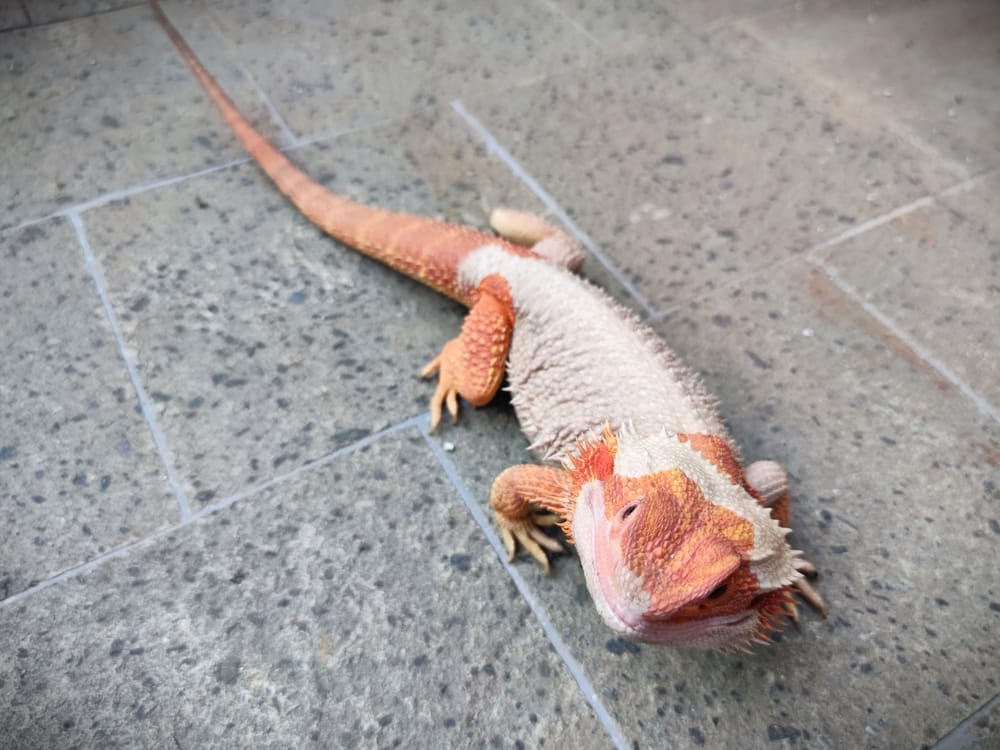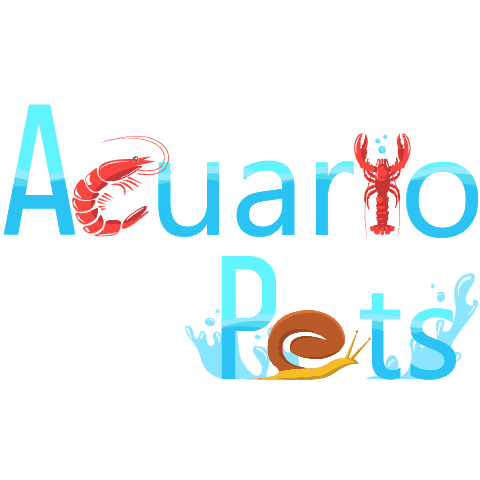This post was created with help from AI tools and carefully reviewed by a human (Muntaseer Rahman) . For more on how we use AI on this site, check out our Editorial Policy.
Check Out These FREE Tools We Made JUST For You!
Bearded Dragon Poop Problems: What’s Normal and What’s Not

Look, I get it. Nobody wakes up excited about talking poop.
But if you’re a bearded dragon owner, checking out your scaly buddy’s bathroom habits is about as important as checking your bank balance before a big purchase.
Here’s the thing: your beardie’s poop tells a story. A gross story, sure, but one that could save their life.
What Normal Bearded Dragon Poop Actually Looks Like
Healthy bearded dragon poop is basically a two-part deal.
You’ve got the brown fecal matter that looks like a tiny log, and then there’s the white or yellow urate at the end. The urate is basically their version of pee, since these guys don’t have a separate pee system like we do.
The poop should be firm but not rock-hard, brown (think various shades of chocolate), and hold its shape when passed.
There might be some liquid around it, and that’s totally fine as long as the poop itself looks formed. Your beardie is just well-hydrated, not sick.
How Often Should Your Beardie Actually Poop?
This depends on age, and the differences are wild.
Baby Bearded Dragons (Under 4 Months)
Babies poop 1-3 times daily.
Yep, you read that right. You’re basically running a tiny lizard daycare with constant diaper duty.
They’re eating tons of protein to fuel their crazy growth, so their little digestive systems are working overtime.
Juvenile Bearded Dragons (4-18 Months)
Juveniles typically poop every day or every other day.
As they get closer to 18 months, you’ll notice them slowing down to maybe 2-3 times per week.
This is totally normal as their diet shifts from mostly insects to more veggies.
Adult Bearded Dragons (18+ Months)
Adults poop anywhere from 1-7 times per week.
That’s a massive range, I know. Some go daily, others only once a week.
It depends on their diet, how much they move around, and just how their individual body works. Think of it like how some people are morning poopers and others are… well, not.

Your Beardie Has More to Say…
This article tells you WHAT to do, but do you know WHY your dragon needs it? Or what they’re thinking when you do it wrong?
Read the full rant (all 20 chapters of it) in: “What Your Bearded Dragon Wishes You Knew”
*Told by a very frustrated beardie who’s had ENOUGH of watching you guess.*
Poop Colors: The Good, The Bad, and The “Call Your Vet Right Now”
Brown and White (The Gold Standard)
This is what you want to see every single time.
Brown log-shaped feces with white urate means you’re doing everything right. Keep it up.
Green Poop (Usually Fine)
Before you panic, green poop is often just from eating lots of leafy greens like spinach, kale, or green peppers.
As long as your beardie is acting normal—still eating, moving around, being their usual grumpy self—you’re probably fine.
Red flag: If the green poop comes with lethargy, weight loss, or a foul smell, that could mean digestive or liver problems. Time for a vet visit.
Yellow Poop (Maybe Concerning)
Yellow poop can come from eating red fruits, but it can also point to liver issues.
If the urates (the white part) are looking yellowish instead of white, your beardie might be dehydrated. Add more water-rich veggies or give them a bath.
Black Poop (Proceed With Caution)
Black poop usually means too many insects in their diet, especially if they’re adults.
But here’s where it gets scary: black poop can also mean intestinal bleeding.
If you see black poop and your beardie seems off, get them to a reptile vet ASAP.
Red or Bloody Poop (Definitely Concerning)
A little blood once might not be the end of the world—could be from constipation.
But if you see blood multiple times, this could mean internal bleeding or serious constipation. Don’t mess around with this one.
All White (Just Urate, No Poop)
If you only see white urate with no brown fecal matter, that’s okay occasionally.
But if it keeps happening and no actual poop shows up in the next few bathroom trips, something’s blocking things up.
Runny Poop: The Two Main Culprits
Diet Issues (Overhydration)
Feeding too many water-rich foods—like leafy greens, fruits, or hornworms—can turn your beardie’s poop into a watery mess.
It’s not dangerous by itself, but it means you need to dial back on the wet stuff.
Parasites (The Nasty Ones)
67% of bearded dragons have some kind of parasite problem. Let that sink in.
The most common are coccidia and pinworms. In small amounts, they’re not a big deal—most healthy beardies have them.
But stress, poor husbandry, or too many parasites can turn a minor issue into a life-threatening disaster.
Signs your beardie has a parasite problem:
- Foul-smelling, runny poop that reeks worse than usual
- Weight loss even though they’re eating normally
- Lethargy and weakness
- Loss of appetite
- Mucus in the stool
If your beardie checks multiple boxes, get a fecal test done at your reptile vet. Treatment usually involves deworming meds like Panacur, Ponazuril, or Metronidazole.
Constipation and Impaction: The Silent Killers
If your adult beardie hasn’t pooped in a week, or your baby hasn’t gone in 2-3 days, you’ve got a problem.
Impaction is one of the leading causes of death in bearded dragons.
It’s basically a blockage in their digestive tract, and it can be caused by a bunch of things.
What Causes Impaction?
- Loose substrate: Sand, calci-sand, walnut shells, wood chips—all terrible. Your beardie can accidentally eat them while hunting and they build up inside.
- Food too large: If the food is bigger than the space between their eyes, it can get stuck.
- Low temperatures: The basking spot needs to be 100-115°F for proper digestion. Too cold = food sits there like a brick.
- Dehydration: Dried-out poop doesn’t move easily through the intestines.
- Too many hard-shelled insects: Superworms, mealworms, and dubias in massive quantities can cause issues.
Signs Your Beardie is Impacted
- No poop for over a week
- Lethargy and weakness
- Loss of appetite
- Bloated, swollen belly
- Partial paralysis in the back legs (this is SERIOUS—the blockage is pressing on their spine)
That last one is terrifying. Bearded dragons don’t have discs between their vertebrae like mammals do, so pressure on the spine can cause paralysis.
How to Help a Constipated Beardie
If you catch it early, try these at home:
- Warm baths: 15-30 minutes in lukewarm water (around 100°F). Many beardies will poop in the bath.
- Belly massage: Gently massage their belly toward the vent (the cloaca). Don’t press hard.
- Increase hydration: Offer water or water-rich veggies.
- Check the temperature: Make sure the basking spot is hot enough for digestion.
If none of this works within a few days, or if you see paralysis, get to a vet immediately.
The vet can do X-rays, prescribe laxatives, give an enema, or in severe cases, perform surgery. Surgery can cost $300-$1200, but most vets offer payment plans.
What About Chalky White Urates?
If the white urate looks dry and chalky instead of soft and pasty, your beardie is dehydrated.
Give them 15-minute baths a few times a week, offer fresh water daily, and add more moisture-rich veggies to their diet.
When Your Beardie Poops Too Much
Pooping more than usual can happen for a few reasons:
- Stress: New pet in the house? Loud noises? Something lurking outside the tank? Stress can speed up their digestive system.
- High-calcium diet: Silkworms and other calcium-rich feeders can make them go more often. That’s actually normal.
- Pregnancy (gravid females): Female beardies carrying eggs eat more and poop more. It’s just biology.
Special Case: Brumation (Reptile Hibernation)
During brumation—usually in winter—your beardie might barely eat or poop for weeks or even months.
This is normal seasonal behavior. They’re basically hitting the snooze button on life until warmer weather returns.
Don’t panic if they stop pooping during this time, as long as they went into brumation healthy.
Why You Should Never Ignore Poop Problems
Bearded dragon poop can carry Salmonella, which is dangerous for humans but not usually deadly for the lizard.
Always wash your hands after handling your beardie or cleaning their tank. Keep them away from your face, especially your mouth.
But beyond human health, poop problems can quickly snowball into major issues for your beardie: dehydration, organ damage, paralysis, and death.
Catching issues early—like noticing runny poop or no poop at all—can literally save their life.
The Bottom Line
Looking at poop isn’t glamorous, but it’s one of the most important things you can do as a beardie owner.
Check their poop every time you clean the tank. Notice the color, consistency, and frequency.
If something seems off for more than a day or two, don’t wait. Get a fecal test or see a reptile vet.
Your bearded dragon can’t tell you when something’s wrong, but their poop absolutely can.
So grab that tiny shovel, put on your detective hat, and start paying attention to what’s happening in that tank.
Your beardie is counting on you.
About Author
Hello, I’m Muntaseer Rahman, the owner of AcuarioPets.com. I’m passionate about aquarium pets like shrimps, snails, crabs, and crayfish. I’ve created this website to share my expertise and help you provide better care for these amazing pets.
Disclaimer
This site is owned and operated by Muntaseer Rahman. AcuarioPets.com is a participant in the Amazon Services LLC Associates Program, an affiliate advertising program designed to provide a means for sites to earn advertising fees by advertising and linking to Amazon.com. This site also participates in other affiliate programs and is compensated for referring traffic and business to these companies.

